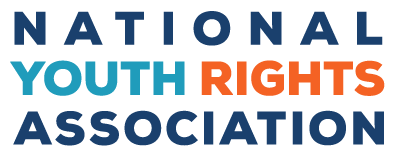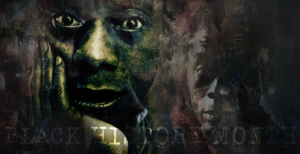The degree to which the third (current) wave of feminism ignores youth rights issues has always boggled my mind. Historically, second wave feminist leaders like Shulamith Firestone made important contributions to youth rights theory and discussed the oppression of children as an important social fact  like the oppression of women and African-Americans. Sadly, while third wave feminism prides itself on taking a more intersectional approach to feminism (incorporating an analysis of class, race, sexual orientation, gender identity, and other factors into the equation) the experiences and concerns of the youngest women are still almost completely absent from mainstream feminist discussions. It’s time to put feminism into youth rights and to put youth rights into feminism.
like the oppression of women and African-Americans. Sadly, while third wave feminism prides itself on taking a more intersectional approach to feminism (incorporating an analysis of class, race, sexual orientation, gender identity, and other factors into the equation) the experiences and concerns of the youngest women are still almost completely absent from mainstream feminist discussions. It’s time to put feminism into youth rights and to put youth rights into feminism.
For all their talk of Slut Walks and reproductive and sexual freedom, third wave feminists ignore that very few segments of our society have their bodies, sexuality, and clothing choices policed as heavily as young women in middle and high school. School dress codes use Taliban-like logic to enforce young women to adhere to standards of “purity” and “chastity” in their dress, ignoring differences in body types and seeking to instill shame in young women for their physical appearance. While feminists generally (and rightly) advocate against parental consent laws when it comes to abortion, they often do so because of the ageist belief that any young woman who carries a pregnancy to term and wishes to parent in her teens is an unfit mother. I don’t know what to call this attitude but it certainly isn’t “pro-choice” in any meaningful sense. Additionally, little is ever said about those young women whose families force or coerce them into having abortions they may not want.
Most feminists seem thrilled with the idea of comprehensive sex education for young people but are willing to impose it on youth whether these youth deem it appropriate for them or not. Certainly youth should have the right to learn about such a charged topic in the setting of their choice and with the instructors of their choice. However, in the rush to “enlighten” young people this is almost always forgotten. Additionally, while many feminists put a lot of stock in bodily autonomy, they ignore the rights of young women and men to access contraception, psychiatric care, STD care and preventive services, transgender-related health care, and other types of health care without parental consent. Mainstream feminists also pay too little attention to the injustice of attitudes by parents, health care professionals, and others that dictate that young women cannot possibly know what is in their best interests when it comes to medical decisions. Finally, too many feminists ignore the necessity of young people being able to refuse medical treatment. It is important for feminists to internalize the idea that much as adult women are competent to make decisions about their bodies, sexuality, and medical care, young women should be respected in much the same way.
Our schools are also far from ideal places for young women. When feminists discuss the culture of cattiness and cliquishness that is often so endemic to young women in our schools, they usually ignore the role the schools play in fostering this attitude. Much like prisoners, students form cliques in order to exert a limited amount of power in an oppressive environment. Young women who behave in ways that go against the grain of typical femininity are often more likely to receive disciplinary sanctions than other students. This is especially true of LGBTQ young women, young women with disabilities, and young women of color. All too many teachers and administrators have overly narrow and stereotypical views about how young women (and men) should perform gender. They are empowered to use their authority to punish those who do not behave in accordance with their preferences.
Young women are also targeted for carrying ibuprofen and other needed medications to deal with menstrual cramps and other consequences of having a female body. (Think of our thirteen-yearold sister Savana Redding who was strip searched by school officials for allegedly having ibuprofen in her possession.) Students are not allowed to use the restroom and drink water when needed. This puts female students at an especially high risk of medical problems (although it is good for no one) as female anatomy is more prone than male anatomy to urinary tract infections, which can be extremely serious and painful.
The supremacy of parents over their children also poses special hazards for all female, gender variant, and LGBTQIA (lesbian, gay, bisexual, transgender, queer, intersex, and asexual) youth. Parents, like teachers, can use their authority to punish their children when they do not perform gender in ways that suit their tastes. Parents are often less likely to allow their daughters significant freedom outside the home than they are to allow the same freedom to their sons. Parents are also likely to police their daughters’ dress, sexuality, freedom of movement, choices of friends, and activities more closely than they would their sons’. Youth are additionally routinely forced to practice their parents’ religion and religions are much more likely to be misogynistic than misadronystic.
When feminists wonder in amazement where young women who are abused by romantic partners get the idea that coercion, violence, and controlling behavior are signs of love and concern the obvious answer should be “their parents and teachers” although no one ever seem to float this possibility. “Corporal punishment” in homes, schools, or any other setting is domestic violence – it is no less serious than domestic violence aimed at adult women because it is aimed at children. If anything, it is more heinous as children tend to be physically weaker, to possess fewer legal rights, and to have almost no satisfactory options when it comes to escaping an abusive environment.
Behavior modification camps are also especially detrimental to young women (although, again, they are not good for anyone). Some of these facilities are run by religious extremists who take an especially savage view of women and seek to punish the young women in their facilities in especially sexist ways. Young women are also often sent to such facilities for defying gender norms in ways that make their parents uncomfortable. Female youth in these facilities are often denied the right to female-specific health care and are shamed and belittled in gendered ways – being called “sluts,” “whores,” and other gendered slurs as part of their “treatment.”
In summary, youth oppression impacts female youth in different ways than male youth and for far too long, both youth rights circles and feminist circles have ignored the intersection of feminist and youth rights issues. Adult feminists frame issues that affect young women in ways that are politically convenient or personally comfortable for them without critically analyzing their own attitudes for ageist bias. Youth rights supporters often frame issues in a gender blind way that, while not deliberately sexist, has the effect of invisibilizing the experiences of female youth by assuming male youth as the default subject of their critiques of ageism. This article has barely skimmed the surface of the ways in which female youths’ experiences of oppression are gendered as well as due to age-based factors.
I call on all youth rights supporters to move beyond seeing “male” as a default position from which to organize and understand youth oppression. Just as vitally, I call on all feminists to interrogate their own ageism, to place youth rights (as opposed to paternalistic concerns about youth welfare) at the center of their organizing, and to fight for young women to have the freedom they so passionately seek for themselves. Youth rights is not only a feminist issue – it is the most important and most neglected feminist issue of twenty-first century America. Until contemporary feminists realize that the subjugation of our young sisters and brothers in their homes and schools is the vanguard issue of civil and human rights in the United States they are not living up to the legacy of their foremothers and forefathers. Past generations of feminists have helped to topple or reform some of the most oppressive prejudices and institutions in human history while managing to leave the institution of the legal and social status of minors nearly untouched. It’s time to create a truly intersectional feminism where liberty, equality, and justice is truly a birthright and not something earned by living long enough to become an “adult.”






This was a great article. I love reading about the intersection of prejudices. And you’re absolutely right that this is one.
Excellent essay. I believe a lot of the willful blindness of feminism as described can be understood better if one realizes that home and ‘child-rearing’ are social spheres where women DO wield some authority and power over others. Teaching has also been a career path populated disproportionately by women. The solution in these situations is not just to point out the hypocracy, but to search out and propose ways to form alliances and work together towards mutual goals.
As for why the long acronyms, it is because each letter has a different meaning. Homosexual men and some women identify as “gay” while other homosexual women identify as “lesbians” in order to demonstrate a distinctiveness from gay male culture. (In many ways, the gay and lesbian culture are very different although there is a lot of overlap and it isn’t inappropriate to refer to a “gay and lesbian community.”) Bisexuals want a label that emphasizes that they are both homosexual and heterosexual. Transgender people want a label that emphasizes gender fluidity and/or gender transition, which most of the LGB community doesn’t identify with to the same extent. “Queer” is becoming an increasingly popular umbrella term – it’s not my personal favorite but it is meant to emphasize a sense of unity within the community. “Intersex” refers to those individuals born with both male and female anatomical features – their oppression is unique because they often have normalizing surgeries forced upon them that can create health problems and remove sexual sensation. Asexuals do not feel a sense of sexual attraction towards anyone and are often oppressed for their unwillingness to conform to social norms around gender and sexuality. We are all united as brothers and sisters against oppression based on sexuality and gender, but the forms it takes can be very different.
Sciville, I’m a little confused at labeling the prominent disproportion of women both as the stay at home parent, and the American teacher as a ‘sentiment’ (troublesome as those ratios might be). Dismissing facts as sentiment doesn’t do much to bring a better understanding to the issue.
People are never entirely oppressed or entirely oppressors. We can (and do) find lots of complaints from women of color that the feminist movement– dominated by white, middle-class women– hasn’t and didn’t pay enough attention to issues of racism. That institutions like Human Rights Campaign did and do the same to people of color, and transsexuals as well. Even youth can’t avoid the label oppressor, as they are often insturmental in the bullying of their gay and queer counterparts. I believe we both agree the solution is to find common ground in bridging these situations. But the first step in that is always to understand as best we can the power relationships involved in oppressive relationshops of all sorts.